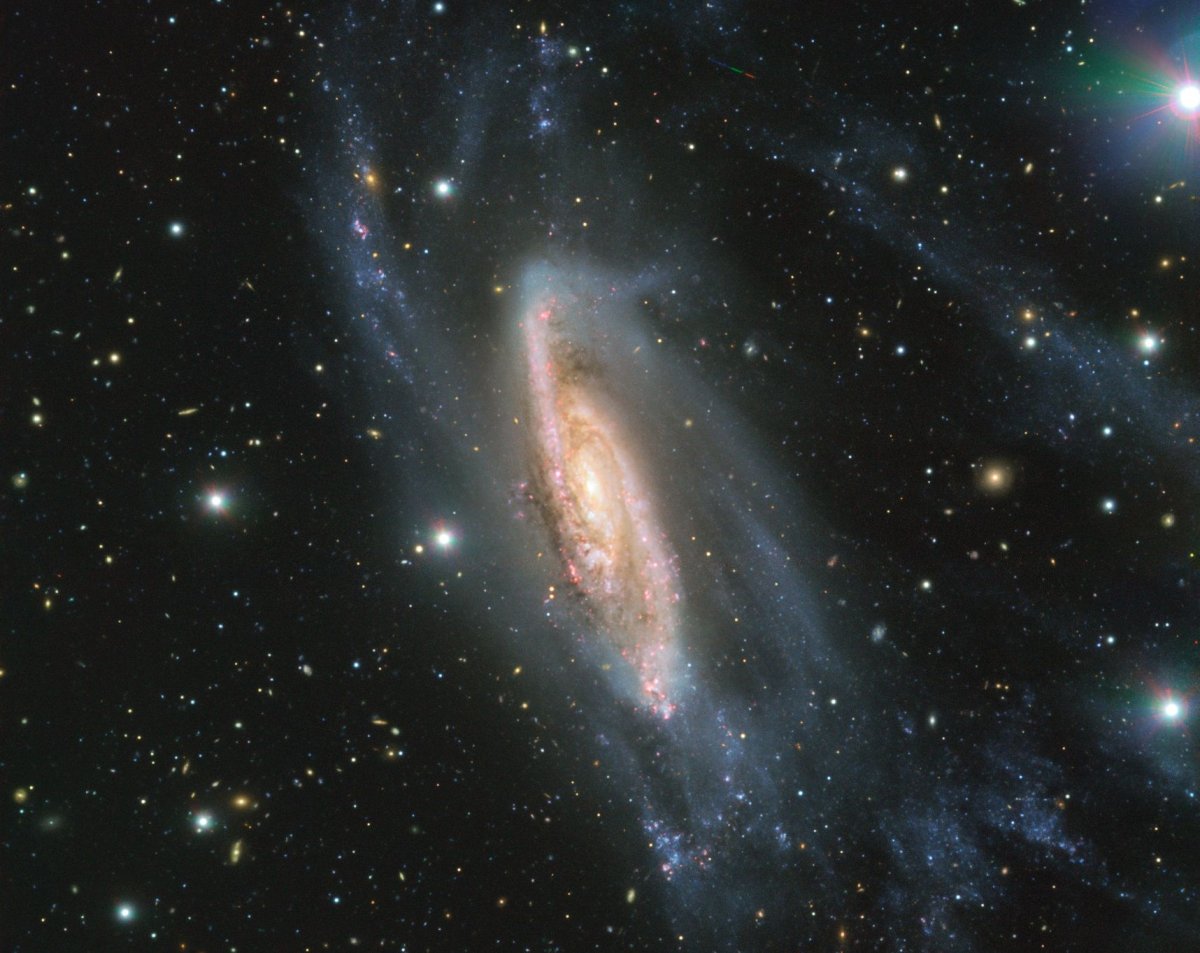Astronomers have captured a spectacular image that shows the magnificent spiral galaxy NGC 3981 in all its glory.
The spiral arms of the galaxy—which lies in the constellation Crater (the Cup)—and a prominent disc of hot young stars can be seen in incredible detail.
NGC 3981 is inclined towards our planet, enabling us to look right into its heart and observe the bright galactic center—a highly energetic region that likely contains a supermassive black hole (as is predicted for most galaxies).
Interestingly, the image also reveals how the outer structure of the spiral has been stretched away from NGC 3981, probably as a result of an encounter with another galaxy whose gravity pulled material away from it.
NGC 3981 is located around 65 million light-years from Earth and forms part of the NGC 4038 group of galaxies. This group is part of the larger Crater Cloud, which in itself is part of the larger Virgo Supercluster—a vast concentration of more than a million galaxies extending for around 110 million light-years across, containing our own Milky Way and its well-known neighbor Andromeda.
The new image is also notable for unwittingly capturing an asteroid streaking across the sky, which is visible as a thin, multicolored line near the top, above the galaxy.
The photo was taken in May using the FORS2 instrument mounted on Unit Telescope 1 of the European Southern Observatory's (ESO) Very Large Telescope (VLT) array—the world's most advanced visible-light astronomical observatory located in Chile's Atacama Desert.
It actually consists of three different exposures, taking in blue, green and red light, which explains why the streak of the asteroid is split up into these colors as it moves across the image field.

FORS2 (short for FOcal Reducer and low dispersion Spectrograph 2) is a cutting-edge instrument referred to as the "Swiss army knife" by operators because of its versatility.
The VLT array consists of four Unit Telescopes with main mirrors measuring 8.2 meters in diameter. These can work together by combining the light beams they detect using a complex system of subterranean mirrors. This enables astronomers to reconstruct images with a resolution that is equivalent to distinguishing the two headlights of a car at the distance of the Moon.
Uncommon Knowledge
Newsweek is committed to challenging conventional wisdom and finding connections in the search for common ground.
Newsweek is committed to challenging conventional wisdom and finding connections in the search for common ground.
About the writer
Aristos is a Newsweek science reporter with the London, U.K., bureau. He reports on science and health topics, including; animal, ... Read more
To read how Newsweek uses AI as a newsroom tool, Click here.








